Matador Network's Blog, page 411
September 26, 2022
The 14 Best Nashville Airbnbs By Neighborhood
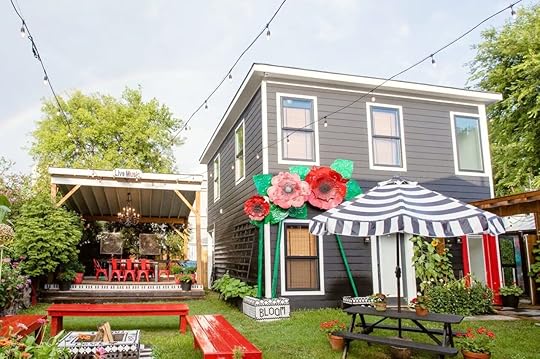
The city of Nashville, commonly known as Music City, is truly the place that gives guests the best of both worlds. Experience the city’s magic with colorful flashing lights, lively music and hotspots, and the calming countryside of the Tennessee Hills. Nashville is undoubtedly a perfect place for a celebration, getaway, or relaxing vacation. Take in all of what Nashville offers by visiting downtown, the historic Five Points, and other prominent and historical landmarks. Want to be right in the middle of it all? Then here are the best Airbnbs in Nashville that will put you right in the middle of everything.
Traveling to Tennessee? Check out Matador’s top Tennessee accommodation guides:Gorgeous Tennessee Airbnbs across the state for your next southern roadtripThe best Airbnbs in Nashville for a bachelorette getaway15 Gorgeous Airbnb Cabins in the Smoky Mountains for a Cozy GetawayEscape To These Dreamy Gatlinburg Airbnbs High in the Smokies
We hope you love the Airbnb Nashville rentals we recommend! Just so you know, Matador may collect a small commission from the links on this page if you decide to book a stay. Listed prices are accurate as of the time of publication.
Airbnbs in Downtown NashvilleAirbnbs in East NashvilleAirbnbs in Nashville’s Music RowAirbnbs in Nashville with a poolAirbnbs in Nashville with a hot tubAirbnbs in downtown NashvilleDowntown Nashville is home to some of the world’s best nightlife and entertainment. If visiting for nightlife, a conference, or a sporting event, these Airbnbs put you close to your itinerary.
The Music City’s getaway suite
Photo: Airbnb

Photo: Airbnb
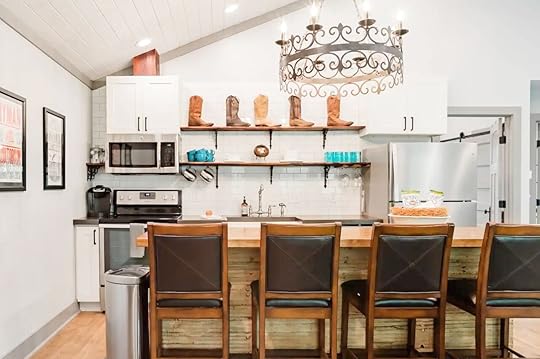
Photo: Airbnb
Check out this cowboy music-themed suite just minutes away from Downtown Nashville. This music-themed suite has an open floor plan with a spacious kitchen and living room area. This getaway is a newly renovated space with vintage accents within the West End and Green Hills area.
Four guests, one bedroom
Price: $126 per night

Photo: Airbnb

Photo: Airbnb

Photo: Airbnb

Photo: Airbnb
Set in one of Nashville’s best areas is this modern guesthouse suite. The suite belongs to a songwriter, so it’s full of musical instruments that guests can use. There is a full kitchen and open living room with a piano, guitar, and other playing instruments. The home is just off Route 65 and just minutes from downtown and blocks away from the 12 South neighborhood, Vanderbilt, Belmont, and Music Row. 
Two guests, one bedroom
Price: $103 per night

Photo: Airbnb

Photo: Airbnb

Photo: Airbnb
This bright and mid-century modern home offers guests a place to relax throughout all the Nashville adventures. This Airbnb Nashville property features a large, fully equipped kitchen that leads directly to the open living room. This space is ideal for a family or group of friends with plenty of hang-out spots throughout the home. The residence is just s short drive to downtown and seven minutes to The Nations.
Ten guests, three bedrooms
Price: $131 per night
East Nashville is a hip part of town with party vibes and friendly people. These Airbnbs are right in the heart of the action.
East Nashville retreat
Photo: Airbnb

Photo: Airbnb

Photo: Airbnb

Photo: Airbnb
Escape the everyday duties with this Airbnb Nashville retreat with its exposed brick, brick fireplace, and spacious front porch to lounge on after a day out in town. The home has a fully equipped kitchen and vintage-like living room that transports you back in time. The house is steps away from restaurants, boutique shops, and more of Downtown’s iconic spots and events.
Eight guests, four bedrooms
Price: $580 per night

Photo: Airbnb

Photo: Airbnb

Photo: Airbnb
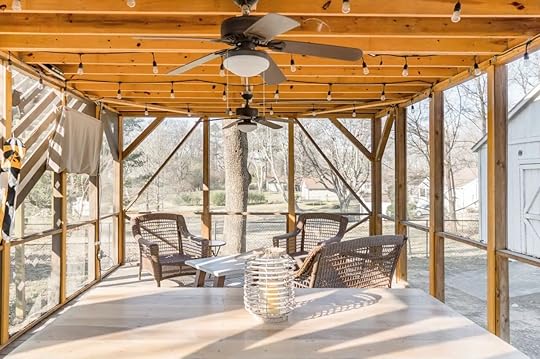
Photo: Airbnb
This renovated guest suite has an open concept layout and features urban chic, decor color, and furnishings. This modern suite is in a quiet and established neighborhood about six miles east of Downtown Nashville. The suite also has a shared backyard with a screened patio.
Four guests, one bedroom
Price: $119 per night

Photo: Airbnb

Photo: Airbnb

Photo: Airbnb

Photo: Airbnb
Sitting on East Nashville’s best street in the prime is this remodeled 1919 two-story Craftsman home. This Craftsman home is full of character and features a full kitchen and decorative living room space. There is also an outdoor patio with a BBQ grill and furniture for enjoying those perfect Nashville night-ins. If a night out on the town is more your style, the home is near Five Points and restaurants, shops, and bars.
Six guests, two bedrooms
Price: $164 per night

Photo: Airbnb

Photo: Airbnb

Photo: Airbnb

Photo: Airbnb
Enjoy Nashville from a whole new perspective with this newly remodeled downstairs basement suite. This basement apartment has an open floor plan with a kitchen, living room, and two blocked-off spacious bedrooms. The suite also features a private backyard patio where guests can enjoy a river view, with unique visits from turkeys’ deer, rabbits, and occasionally a pair of bald eagles.
Six guests, two bedrooms
Price: $198 per night
Music Row is home to some of the world’s most renowned music venues. Many artists got their start here, and strolling through a venue crawl is akin to walking through music history. These Airbnbs make it easy to do so.
Colorful and charming two-story villa
Photo: Airbnb

Photo: Airbnb

Photo: Airbnb

Photo: Airbnb
This charming villa will surely set you in the mood for a Nashville getaway. This sophisticated and relaxed villa has a full kitchen and spacious living room with a splash of colorful decor throughout. The home is full of natural light, has high ceilings, and it’s filled with various amounts of creative art. The villa also features a backyard patio space that truly transports guests into another dimension.
Five guests, two bedrooms
Price: $400 per night
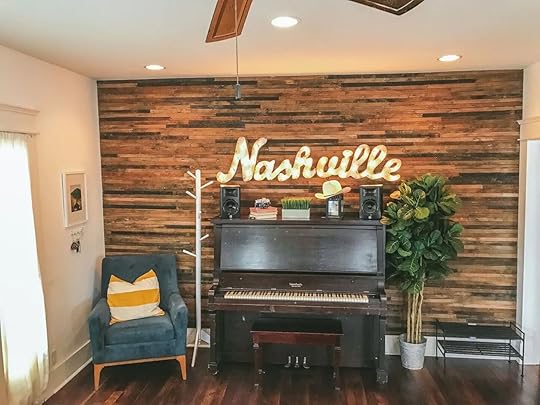
Photo: Airbnb

Photo: Airbnb

Photo: Airbnb

Photo: Airbnb
Specifically designed for those visiting Nashville to see live music, The Nash Villa boasts an epic pregame space with a piano, plenty of yard room to lounge, and a kitchen to prepare a meal before heading out for the night. Located in Edgehill Village, coffeeshops and dining are right up the street.
Four guests, two bedrooms
Price: $199 per night

Photo: Airbnb

Photo: Airbnb

Photo: Airbnb

Photo: Airbnb
Embrace the vibe of Music City at Acoustic Retreat #7, complete with guitars and easy access to the best venues in town. Close enough to walk or Uber but secluded so that it’s quiet and serene, this apartment is great for couples or buddies coming to experience to best of Nashville’s music scene, without having worry about driving or logistics.
Four guests, one bedroom
Price: $108 per night
If you’re going to experience the best of Nashville, you might as well be able to cool off afterward, right? These Airbnbs with a pool make that easy.
Stylish newly renovated studio near popular destinations
Photo: Airbnb

Photo: Airbnb

Photo: Airbnb

Photo: Airbnb
This newly renovated and vibrant studio is the perfect base for a Nashville getaway. This dynamic studio has a full-size equipped studio kitchen, cozy queen-sized bed, and an outdoor pool to cool off on those hot summer Nashville days. The studio is within walking distance or just minutes away from popular destinations like Downtown Nashville, Vanderbilt/Belmont, and many shops and restaurants.
Two guests, one bedroom
Price: $100 per night

Photo: Airbnb

Photo: Airbnb

Photo: Airbnb

Photo: Airbnb
This stunning Airbnb Nashville property is another relaxing and inviting property in the heart of the Five Points area. This remodeled 1928 guesthouse features an all-white sleek interior and theme with a pop of color splashed throughout the home. The suite features an open floor plan with a kitchen area and a bright and airy living room area with doors that lead to the outdoor common area with a pool.
Four guests, one bedroom
Price: $149 per night
Here’s a little secret — whether or not it’s cool at night (which it can be in Nashville), soaking in a hot tub is a great way to relax after a night out on the town. These Airbnbs have a hot tub and an extra dose of class.
Large luxury home with rooftop hot tub
Photo: Airbnb

Photo: Airbnb

Photo: Airbnb

Photo: Airbnb
This unique property combines the best of hip urban living with Nashville’s quaint country charm. Chill on the rooftop with a drink while soaking your cares away. The home has a large, spacious interior that is great for capturing Nashville’s classier side, a key component if you plan to tour the city’s dining and nightlife scenes.
Twelve guests, three bedrooms
Price: $301 per night

Photo: Airbnb

Photo: Airbnb

Photo: Airbnb

Photo: Airbnb
This home uniquely capture Nashville like few others do. It its a classic house that has been remodeled to include modern fixings and amenities, including a hot tub, and offers a quiet location that gives you a chance to chill out from before or after exploring the city. The home is close to all the action, but comfortably removed.
Six guests, one bedroom
Price: $193 per night
How To Find Authentic Chinese Food Wherever You Are

There’s a reason Chinese food is the go-to meal for families across the United States. Whether you live in Florida, New Mexico, or Maine, there’s a solid chance that there’s a Chinese food restaurant in your neighborhood that’s in your family’s regular take-out rotation. No matter where you are, though, there’s one tip to quickly determine which Chinese restaurants in the area have the best food.
In a video viewed more than eight million times, TikToker @rocketjump (who is Chinese) revealed his method for picking out the restaurants with the most “authentic” Chinese food like dim sum or hot pot: look at its starred rating on platforms like Yelp, and restaurants with exactly 3.5 stars are the ones to go for.
@rocketjumpWhy I only go to Chinese restaurants with 3.5 star ratings
It might be counter intuitive. After all, 4 or 5 stars should, at least in theory, indicate the best food, right? But according to the video, 4 stars is too many because “too many white people like it, and the service is too good.” For authentic Chinese food, that’s not the rubric you want to be using.
On the other hand, at a dumpling house with 3.5 stars, “The waiters are not going to pay attention to you,” he says in the video. They’re going to be rude, but it’s going to taste better.”
He has a theory for why 3.5 stars is the sweet spot for Chinese food. Given that “cultural expectations for service are different in Asia,” Americans – who are used to proactive, attentive waiters – will give a restaurant with really good food a poor rating because of what they perceive as bad service. And yet the food, being as good as it is, will balance the rating out. Thus, you get 3.5 stars.
Next time you’re traveling to an unfamiliar city and you’re craving the unmistakably comforting flavors of Chinese food, give this trick a try.
September 23, 2022
Two Resorts That Make the Perfect Bahamas Vacation Easy, No Matter What You’re Looking For

If you’re based in the United States, the Bahamas is just about the most accessible Caribbean destination you can escape to. You can even get there by ferry from Florida. And it’s just as easy to get around once you arrive — whether you choose to stay in Nassau, Paradise Island, or any one of the 20-plus inhabited islands that make the 700-island archipelago, pretty much everything a traveler could ask for on a tropical vacation is accessible.
Nassau and Paradise Island are about a three hour or less flight from any city on the East Coast of the United States, and a short 40 minute flight from Fort Lauderdale and Miami airports. Fun fact: Flying from Fort Lauderdale International Airport to Nassau is literally quicker than driving to Miami. As an added bonus, Nassau is one of the few airports that has US preclearance and Global Entry kiosks, meaning you go through immigration before getting on the plane on your trip back home.
Whether you’re looking to have the ultimate relaxation or get out for some fun in the sun, two resorts make it easy depending on the type of trip you’re looking to take: Sandals Royal Bahamian and Margaritaville Beach Resort.
Margaritaville Beach Resort, NassauView this post on InstagramA post shared by Margaritaville Resort Nassau (@margaritavilleresortnassau)
With sweeping views of the cruise port, harbor, and downtown Nassau, Margaritaville is where to stay if you want to be in the middle of the action. The One Particular Harbor room includes a large bathtub and balcony. While the resort is definitely kid-friendly, there are amenities reserved just for adults.
If one thing is for certain, it’s that there’s no shortage of food and drink options at Margaritaville. Grab a quick snack of nachos, fish tacos, or wraps at Feeding Frenzy. For drinks (especially delicious frozen options), 12 Volts Bar has a beautiful bar-side view of the beach and cruise ships as they enter and leave the cruise port. JWB Steak House is a hit at dinner surf and turf or lobster ravioli. And if you love oysters, the oyster Rockefeller is divine. Try dining out at sunset to catch the absolutely gorgeous views of the Margaritaville pier.
View this post on InstagramA post shared by Margaritaville Resort Nassau (@margaritavilleresortnassau)
It’s easy to end the night on a high note here thanks to the rooftop bar Graycliff Sky Lounge. The spot overlooks the resort and downtown Nassau, and you can order specialty cocktails or take it easy with a gin and lemonade, which Bahamians call switcha. Cigar rolling and a DJ who plays an eclectic musical selection sets a vibesy mood.
Even if you’re not staying at the resort, a day pass is available so you can enjoy the Fins Up Water Park (great for family and kids) as well as the adults-only infinity pool and spa that comes complete with resort, beach, and cruise port views. You can also opt for a spa day pass at St. Somewhere Spa and have access to the sauna and relaxation facilities, as well as massage and other spa treatments.
Sandals Royal BahamianView this post on InstagramA post shared by Sandals Royal Bahamian (@sandalsroyalbahamian)
One major perk of staying at the Sandals Royal Bahamian is the property’s private island. A five minute ferry transports you from the pristine Sandals Royal Bahamian resort to Barefoot Cay, which is a lot more secluded and quieter than the main resort grounds. You can stay there for most of the day, fall asleep in a hammock, snorkel in the small crystal clear bays of the cay, or just bask poolside in the island chic lounge chairs, pools and jacuzzi.
Staying on the main property has it’s upsides, too. The resort has a number of food options, including French cuisine at La Plume. For a quick pick me up, head to the food trucks conveniently located in the middle of the resort for Bahamian conch dishes and a Caribbean coffee made with rum, cream, coffee, and whipped cream (served hot or cold).
If you can spring for it, the Butler Villa Suite with an outdoor soaking tub is worth the extra cost. It’s secluded away from the busier parts of the resort and gives a taste of peaceful island life — perfect for a romantic getaway.
Restaurants to try off the resorts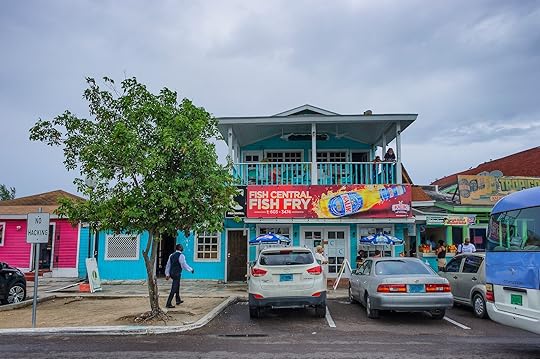
Photo: Dee Browning/Shutterstock
Getting around is typically not an issue especially if you’re staying in downtown Nassau. Taxis are readily available and can be booked via phone or online (try Majestic Tours). Depending on your hotel, transportation can be arranged for you in advance as well — Sandals includes complimentary transportation to the airport if you book a Butler Suite Villa.
Margaritaville is in the perfect location in downtown Nassau to walk to shops, restaurants, the Straw Market, and more along West Bay Street. Venture toward Junkanoo Beach for vendors, volleyball, tiki bars, and entertainment.
A little farther out is the famous Arawak Cay, where you can find authentic Bahamian food. There are so many restaurants to choose from at the Fish Fry, most of which sell various takes on conch. Goldie’s Restaurant is a classic spot that sits on the water where fishing boats come in to dock. Be sure to try the conch and the seafood with peas and rice. While you wait for your food, sea turtles will keep you entertained. Other restaurants to try include Drifter’s (order the conch salad), Twin Brothers (don’t miss out on the daiquiris), and Oh Andros (traditional peas and rice, fish or meat, coleslaw plantains, and baked macaroni are the way to go here). 
15 Amazon Buys Under $20 That Make Solo Women Travelers Safer

Solo travel, regardless of how you identify, can be daunting. A rickety Airbnb lock can lead to broken sleep. Keeping a watchful eye over your hand luggage in a packed airport restroom is downright painful. And navigating unknown streets puts a real downer on a nice evening out. Investing in essential travel safety gear in addition to a good travel pack is an easy way to reduce the likelihood of your vacation being ruined. And although you can’t put a price on your safety, here’s a shopping list of the best deals on Amazon to keep you and your belongings secure.
We hope you love the travel safety gear we recommend. Just so you know, Matador may collect a small commission from the links on this page if you decide to purchase. Listed prices are accurate as of the time of publication.
1. Portable door lock — $11.99 [image error] [image error]The niggling thought of “who else has keys?” is downright awful. Although we hope you’re never in a situation where you feel uneasy in your vacation rental, it does no harm to be extra careful. This portable door lock, is affordable and provides you with that little extra security. It’s super easy to install and remove and requires no tools — or real brain power. The lock is universal and fits all types of door.2. Money belt — $14.59 [image error] [image error]Regardless of whether or not you still carry cash — or traveler’s checks — money belts provide peace of mind during transit and when you’d rather not leave your passport or cards in your accommodation. This belt has three separate pockets, is super lightweight, and blocks all RFID transmissions — so your cards are 100 percent secure. It has an adjustable belt and non-slip backing so you can be rest assured it will stay snug.3. Door stoppers — £13.99 [image error] [image error]Along with a portable lock, a second backup, or alternative option is a door stopper. This pack of two are multifunctional. They act as a basic stopper and an alarm. The alarm system can be set to three sensitivity levels, low, medium, and high. Note the 9V battery is not included, but reviews state the battery life for these simple gadgets is decent.4. Personal alarm — $8.99 [image error] [image error]A personal alarm might seem drastic. But again, for under $10, there’s no harm in investing and popping it in your handbag or pocket. There are many models on the market, but we love this alarm because it’s compact and comes in three different colors; rose gold, black, and metallic purple. They also have a pack of five for $22.99, if you want to equip your group or family. They are very easy to opportate. All you need to do is pull the pin. It also comes with a LED flashlight.5. Safety whistle — $7.99 [image error] [image error]If the thought of pulling a pin on a personal alarm, or the fear of an alarm going off in your pocket, puts you off the above, consider buying a bog-standard whistle. These are advertised as lifeguard whistles, but they do the trick, regardless of the emergency situation. They come in a pack of two and have a handy lanyard. Sometimes, going back to basics is a sensible way to go with personal security.6. Portable safe — $17.49 [image error] [image error]Often when drifting off to sleep on a flight or busy train, it crosses my mind that I’m just not being as safe as I could be with my valuables. Although a moneybelt can handle smaller items, bulky personal belongings like your watch, phone, or headphones would be better kept in a larger secured box. This portable safe is made from shock-absorbing foam, is water resistant, and has an opening for a charging cable. All you need to do is set a four-digit code and you can nod off.7. Bra wallet — $12.40 [image error] [image error]A bra wallet is a genius idea, and let’s face it a heck of a lot more secure than stuffing notes or your cell between your bosoms. This discreet wallet is stylish, has built-in RFID-blocking materials, and is made from an ultra-soft spandex material. It comes in two colors; black and light pink.8. First aid kit — $14.89 [image error] [image error]A first aid kit is an obvious purchase, but we’ve included this package because of its affordability and because it has everything you need. The 85-piece kit comes with the essentials for treating common cuts, scrapes, minor aches and injuries. It’s also small and super lightweight, making it perfect for taking on hiking or backpacking trips.9. Card blocking sleeves — $9.99 [image error] [image error]We’ve already listed a couple of great products that have RFID-blocking technology but these card sleeves are awesome if you don’t want to carry a lot and nip out to the shops. Sadly we should all be protecting our card details and identity regardless of whether we are traveling overseas. These sleeves come in two color shades and for $9.99 you get a sweet pack of 12.10. Dry bag — $10.99 [image error] [image error]This five-liter drybag is so handy to have on the road. It rolls into a compact space, ideal for stuffing at the bottom of your day bag, just in case you need an extra layer of protection for your valuables in wet conditions. The straps are multi-functional and adjustable, which means you can sling it over your shoulder or wear as a backpack.11. TSA-approved locks — $13.95 [image error] [image error]Traveling with TSA-approved locks are a staple. This pack of two are one of the most popular and durable on the market. The tough alloy coating protects the body from rough baggage transit and they are super simple to set your personalized combination. Having the peace of mind that not only your luggage is secure, but if TSA has inspected your item, you’ll be notified by the button that pops out of the top of the cable lock.12. Hand wipes — $16.99 [image error] [image error]In a post-COVID-19 era having hand sanitizer is essential. We love these biodegradable wipes which provide you protection but are also gentle on your skin. They are free of alcohol and harsh chemicals and are great for cleaning sticky fingers of younger travelers.13. Anti-theft shoulder bag — $16.99 [image error] [image error]If you are looking for something a little larger than a money belt, but still require a higher level of security than a standard handbag, consider purchasing an anti-theft bag. These are great because they sit close to your person, they have multiple pockets, and can be worn in various ways. Ideal if you are nipping out for a jog or bike ride, the shoulder bags also come with that all-important RFID-blocking technology.14. Scarf with hidden pocket — $10.99 [image error] [image error]I’ve seen a lot of friends in Europe casually reaching into their scarfs to grab their cell, and I’m still to purchase one of these genius inventions. Not only are they stylish but you can avoid carrying a bag altogether. These scarfs come in nine different patterns and colors. Talk about functional fashion.15. Light-up arm bracelets [image error] [image error]Super important for anyone who loves an early morning run in winter, or if you are walking home alone at night, these LED safety armbands offer high visibility. They are lightweight, come in various colors, have an easy release buckle, and fit all. More like thisBudget Travel10 Travel Accessories Under $10 You Won’t Regret Buying
More like thisBudget Travel10 Travel Accessories Under $10 You Won’t Regret Buying
10 Finger Lakes Wineries To Visit on a Fall Getaway
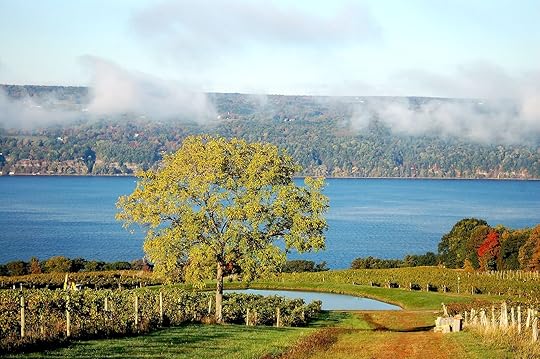
Upstate New York offers more than stunning mountain ranges and sporting events. Head west of Buffalo, and you’ll encounter the state’s 11 Finger Lakes. Ranging in size and location, the lakes earn their title; each one appears thin and lanky, finger-like in form. Yet while the lakes may seem delicate, their depth of offerings is vast. More than 100 wineries span the region, each with sweeping views, snaking vines, and fresh lake air — and the region is legendary for its cider, too. Finger Lakes wineries located near Keuka and Seneca lakes offer enough activities and tasting to keep you entertained for a weekend or longer. Smaller fingers like Conesus and Hemlock are ideal for relaxing day trips.
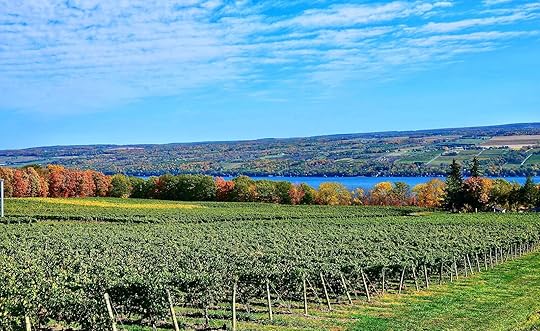
Photo: PQK/Shutterstock
The Finger Lakes are known for cool climate wines that are capable of enduring even the coldest and longest of New York winters. Vitis labrusca grapes, like concord, are a common varietal. Riesling, chardonnay, and pinot noir have also become staples of the region, though these wines fall under the vitis vinifera umbrella and have proven more challenging to grow upstate. To overcome New York’s harsh weather, the region’s winemakers have learned to rely on their surroundings; each Finger Lake tempers New York’s cold environment, creating a microclimate that alters the growing season. Because of the lake effect, vinifera grapes — as well as other varietals — can flourish in an otherwise restrictive climate.
Clearly, each Finger Lake does more for the region’s wine than simply offering up a nice view. Finger Lakes wineries in Seneca, Canandaigua, and Cayuga are plentiful, and you can easily stretch a 40 mile drive around Cayuga — the region’s longest lake — into a multi-stop road trip. Or, start slightly smaller, and pick a lakeside vineyard along Keuka’s fork. Here are the Finger Lakes wineries every visitor to the region should check out – even if it takes you more than one trip. The region’s pristine scenery is in full-focus at each of these Finger Lakes wineries — no matter how much wine you sample.
Finger Lakes wineries everyone should knowDeer Run Winery, Conesus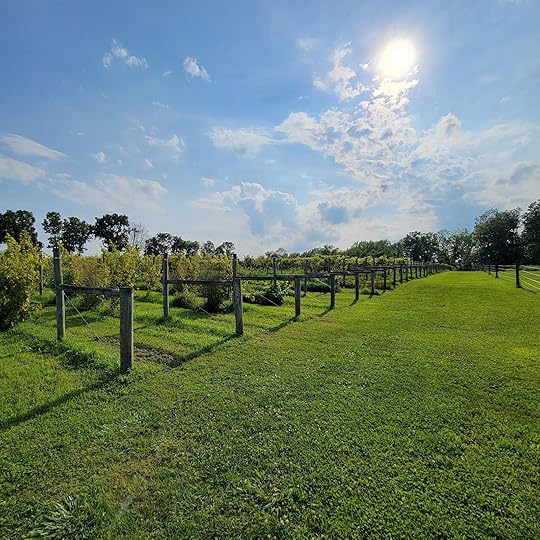
Photo: Deer Run Winery
As Conseus Lake’s oldest operating winery, Deer Run Winery is run by a father-son team. They have been experimenting with various wine-making techniques since 2003. Their vineyard sits on a five-acre farm, where it grows about 20 percent of the grapes used for its wines. The remaining grapes come from an assortment of the area’s other vineyards, so the wine-making process is truly a regional affair. For a hyper-local taste, pick up a bottle of Conesus White.
With a full cafe menu, Deer Run is primed for a leisurely, boozy lunch, as well as tastings and tours. It’s located on the northern end of Conesus — the region’s westernmost lake — so a stop here will appeal to anyone starting their wine tour from Rochester or Buffalo, or looking to stretch their Finger Lakes outing as far west as possible.
Where: 3772 W Lake Rd, Geneseo, NY 14454
O-Neh-Da Vineyard, HemlockView this post on InstagramA post shared by O-Neh-Da&Eagle Crest Vineyards (@onehda_vineyard)
Head east of Conesus to encounter holy ground. A wine tasting at O-Neh-Da is akin to a religious experience — literally. As one of the world’s few remaining sacramental wineries, O-Neh-Da was founded in 1872 under Bernard McQuaid, the then-Bishop of Rochester. Since then, the winery has produced bottles for churches throughout New York state, and even delivered altar wine to Pope Francis back in 2015. Beyond sacramental wines, O-Neh-Da also sells cabernet, chardonnay, and riesling, among other varieties. Each of the bottles consists of natural, pure grapes that make a stop at Hemlock worthwhile, no matter your denomination.
As one of the oldest wineries in America, O-Neh-Da, which overlaps with Eagle Crest Vineyard, has plenty to offer. The winery is 100 percent solar powered. Come for weekend wine tastings, as well as live music performances and events. If you book for a private party, you can enjoy your wine with pizza made from a wood-fire oven.
Where: 7107 Vineyard Rd, Conesus, NY 14435
Arbor Hill Grapery & Winery, CanandaiguaNaples, New York is known for grapes. Every year, the village puts on a grape festival, which simultaneously bodes well for grape pies and the town’s wines. Just west of Lake Canandaigua, Arbor Hill Winery takes full advantage of the beloved fruit; the winery boasts both wines and wine sauces made from the region’s grapes. Pick up a bottle of semi-sweet traminette and a wine syrup of your choosing.
In the tasting room, you can order flights of wine suited to your preferences or opt for a guided tasting that walks you through your choices. Beyond the wine barn, the grapery’s complex also consists of a retail shop, as well as the eatery Brew and Brats. The latter is the perfect option for satiating your hunger, and sampling the best of the Finger Lakes through a beer can in addition to a wine glass.
Where: 6461 NY-64, Naples, NY 14512
Heron Hill Winery, KeukaView this post on InstagramA post shared by Heron Hill Winery (@heronhillwinery)
This winery overlooking Keuka Lake will transport you from Upstate New York to a European vineyard. Elevated just enough to offer glimpses of the fork in Keuka, Heron Hill has plenty of seating that comes with your choice of vista. On a nice day, opt for an outdoor picnic table directly in line with the vines. Meanwhile, fall’s crispest days may be better suited to the indoor tasting room, where a peek out the window will align you with the great outdoors. If you’re one to patiently nurse a wine flight, you may even spot bikers making their way around the lake.
Heron Hill offers tastings at both its Keuka flagship location and its Canandaigua tasting room. You’ll have your pick of wines to sip at your leisure, though Canandaigua also offers tours that explain how those wines made it to your glass. Plus, the winery is pet-friendly, so you don’t have to leave your furry friends behind.
Where: 9301 Co Rd 76, Hammondsport, NY 14840
Dr. Konstantin Frank, KeukaView this post on InstagramA post shared by Dr. Konstantin Frank Winery (@drfrankwine)
Hailed as a pioneer of vinifera grapes, Dr. Konstantin Frank — the vineyard’s namesake — planted some of the first European grapes on the east coast. Back in the 1960s, Dr. Frank, as he’s known, experimented with over 60 iterations of vinifera. The Keuka vineyard has since honed in on a few signature wines and offers 11 total varieties, all planted on 70 acres alongside the lake. Visitors can pick up a bottle of riesling produced on vines from 1958, as well as chardonnay from 1962.
To taste the difference for yourself, you can visit Dr. Konstantin Frank for an in-house wine tasting, a wine-paired dinner, or a grab-and-go bottle. While the signature winery overlooks Keuka, the vineyard also owns a 60-acre plot along Seneca Lake.
Where: 9749 Middle Road, Hammondsport, NY 14840
Belhurst Estate Winery, Seneca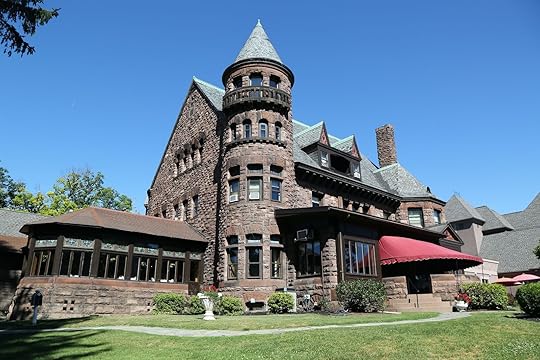
Photo: Leonard Zhukovsky/Shutterstock
If you’ve ever fantasized about drinking like a king, don’t miss Belhurst Estate Winery. Housed in a castle, this winery sits on the north end of Seneca Lake, and is a popular stop along the Seneca Wine Trail. The vineyard sells whites, reds, roses, and dessert wines, so you can have your pick. Stay for a tasting to alternate between sips of sauvignon blanc, dry rosé, and cabernet sauvignon. Belhurst also offers 30-minute tours to educate visitors on the wine-making process.
Doubling as a hotel, this winery is perfect for a late-in-the-day happy hour, where you can watch the sunset over a flight. Belhurst also gives guests the option of a wine-and-cheese pairing, so go ahead and turn that snack into a pre-dinner aperitif. If you’re still hungry afterward, stay for dinner and embrace the luxury side of the Finger Lakes.
Where: 4069 W Lake Rd, Geneva, NY 14456
Lamoreaux Landing Wine Cellars, SenecaOn the east side of Seneca Lake, Lamoreaux Landing boasts more than 119 acres of vines — all suited to sustainable, in-house wine production. Over the course of three generations, the vineyard has bottled wines like riesling, chardonnay, and cabernet franc. Enjoy your choice of drink from the vineyard’s indoor tasting room or from any Lamoreaux’s outdoor tables overlooking scenic Seneca. The vineyard also grows gewürztraminer, merlot, and cabernet sauvignon. Or, opt for a tasting to sample a series of cool climate wines. You really can’t go wrong.
The winery offers daily tastings right from its estate. With 10 wine varieties grown on-site, Lamoreaux sells more than 90 kinds of wine, so you’ll have no shortage of options. Pack a picnic lunch to enjoy from an outdoor table, and get to sipping.
Where: 9224 NY-414 Lodi, NY 14860
Hermann J. Wiemer, SenecaView this post on InstagramA post shared by hermannjwiemer (@hermannjwiemer)
Hermann J. Wiemer winery takes full advantage of its setting. Situated in a sprawling field, the winery produces more than 90 wines. Guests can purchase a bottle from the estate or head to Seneca’s east side to Standing Stone Winery, a nearby vineyard acquired by Hermann J. Wiemer’s owners in 2017. Standing Stone has plots of riesling and chardonnay that date back to the 1970s, making Seneca a wine lover’s paradise — whether you’re visiting the lake from the east side or the west.
At a Hermann J. Wiemer tasting, you can sample wine by the glass, bottle, or flight. In-house wine experts will walk you through your choices, which you can try from inside the estate’s converted barn. The barn combines the rustic Finger Lakes ambiance with a sleek, chic interior — not unlike the estate’s balance of historic vines and contemporary wines.
Where: 3962 NY-14 Dundee, NY 14837
Bright Leaf Vineyard, CayugaEast of Cayuga, Bright Leaf Vineyard is a winery that takes its name seriously. The leafy, 14-acre plot is primed for sunshine and that Cayuga Lake breeze, creating the optimal environment for ventilation and grape growth. The vineyard has both an upper and lower field suited to different kinds of soils. You’ll find the white varietals — riesling and chardonnay — planted along the uphill (read: cooler) block, while the reds originate closer to the lake. There, the rich soil yields the likes of merlot, lemberger, and pinot noir.
Guests can get to know Bright Leaf wines with a flight of four, two-ounce wines. While you can’t bring your own food to the vineyard, you can pair your wine with a chocolate tasting.
Where: 1250 Clearview Road King Ferry, NY 13081
Anyela’s Vineyards, SkaneatelesView this post on InstagramA post shared by Anyela's Vineyards (@anyelasvineyards)
Skaneateles is one of the easternmost Finger Lakes. A visit to Anyela’s Vineyards offers breathtaking hills, local charm, and, of course, ample wine offerings. A three-generation winery, the vineyard uses a tried-and-true formula to combat Upstate New York’s cold, winter climate. Before the harsh weather can set in, the staff removes vines from their trellises and buries them in the earth. Come springtime, the experts re-trellis the vines, giving them a new life.
Anyela’s Vineyards offers daily tastings on-site, so you mix-and-match your favorite wines. Or, forgo the paradox of choice with a flight curated by the staff. Whatever you choose, raise your glass and drink in the view.
Where: 2433 W Lake Rd, Skaneateles, NY 13152 
New Traveler Study Found The 5 Best (and Worst) Airports in North America

TSA lines are long, parking lots are full, and the gates are standing room only — travel is back and in full swing. And while the industry hasn’t entirely recovered from the pandemic, flight prices are falling. But the experience at some airports is falling, too. J.D. Power recently published its annual customer satisfaction index rating to find the best and worst airports in North America.
Travel levels have reached 91 percent of what they were pre-pandemic. However, the industry is still struggling to hire workers, leading to flight cancellations, overcrowded airports, and consumer dissatisfaction. The index found that 58 percent of airport travelers find the terminals moderately to severely crowded. And what seems like a continuous problem made worse, airport food is far too expensive (consider the $27 airport beer).
The study categorized airports by size: mega, small and medium. Mega airports were defined as having at least 33 million passengers every year. Minneapolis snagged first place, scoring 800 out of 1,000, while San Francisco International Airport took second with 796 points, and Detroit Metropolitan Wayne County Airport (791) and John F. Kennedy International Airport tied for third with 791 points.
Best mega airports in North AmericanMinneapolis-Saint Paul International AirportSan Francisco International AirportDetroit Metropolitan Wayne County AirportJohn F. Kennedy International AirportHarry Reid International AirportWorst mega airports North AmericanNewark Liberty International AirportO’Hare International AirportLos Angeles International AirportBoston Logan International AirportToronto Pearson International AirportLarge airports were defined as having 10 to 32.9 million passengers per year. Tampa International Airport earned first with a score of 846 and was also the highest-ranking airport overall. John Wayne Airport in Orange County, California, scored 826, and Dallas Love Field barely trailed behind with 825 points.
Best large airports in North AmericanTampa International AirportJohn Wayne Airport, Orange CountyDallas Love Field AirportLouis Armstrong New Orleans International AirportRaleigh-Durham International AirportWorst large airports in North AmericanPhiladelphia International AirportDaniel K. Inouye International AirportKansas City International AirportLaGuardia AirportSt. Louis Lambert International AirportTo create the index for North America’s and worst airports, J.D. Power compiled the results of 26,529 surveys from August 2021 to July 2022 from US or Canadian residents that traveled through at least one airport, including connecting flights, in the US or Canada within 30 days of taking the survey. The survey covers both departure and arrival experiences and measures overall traveler satisfaction in mega, large
and medium North American airports using six critical measures for a total of 1,000 points: terminal facilities; airport arrival/departure; baggage claim; security check; check-in/baggage check; and food, beverage and retail. 
Can You Guess What These Funny Australian Slang Phrases Mean?

If “G’day, mate” and “Slip some shrimp on the barbie” are the only two Australian slang phrases you know, you’d better study before you make your way to Oz. Australians love their abbreviations more than most (“barbie” for barbecue, “garbo” for garbageman, etc.) and are not afraid of putting a little fun in everyday conversations — Australian slang is plentiful and hilarious, but not always easy to understand for outsiders.
Take the quiz below to test your knowledge of Australian sayings. If you want to study before you take this quiz, check out this guide to Australian slang. 
The Best LGBTQ+ Bars in Miami

Sip poolside cocktails, see high-octane drag shows, or join thumping parties that pulse until dawn. Magic City is a rainbow of queer revelry with a little something for all tastes. It might seem strange, then, that there’s only a handful of gay bars in Miami.
This is the town of Gay Ocho — the nation’s largest Hispanic LGBTQ+ gathering. It’s where the Black gay community comes for Sizzle every Memorial Day, where lesbians flock for parties thrown by Lezchic and Pandora Events, and where boys get wild on the dance floor at Climax. Wilton Manors, a 45-minute drive north, is one of the country’s queerest zip codes. The city’s Atlantic shore even sports two beaches where the sugar-white sands are practically pink.
But if you know where to look, Miami’s LGBTQ+ community sizzles, and perpetually-packed Twist isn’t the only spot turning up the heat. There are quirky dives, top-tier restaurants, and a series of LGBTQ+-friendly spaces stretching along South Beach’s electric-blue shoreline, around Brickell’s shiny skyscrapers, and through the street-art-strewn walls of Wynwood.
Check out these ten spots to see why Miami still earns praise as one of the East Coast’s most hedonistic queer havens.
1. Twist
Two floors, seven bars, three dance floors, and a back room filled with enough gyrating go-go boys to fill every float at Miami Beach Pride: Twist is the Renaissance man of queer clubs — it does a little bit of everything. Hoping to save a buck? There’s never a cover, and happy hour offers two-for-one drinks, 3:00 to 9:00 PM daily. Jonesing for show tunes? A VJ blasts Broadway’s best belters from the Bungalow Bar on Wednesdays. Dance to Latin grooves, see drag performances, get down to house music, or chill and chat bar-side. The crowd tends to pick up after midnight, but no matter when you arrive, the party’s already bumping. This is the only multi-environment club in Miami where you can bar hop without leaving the actual bar. No wonder it’s been going strong since 1993.
Address: 1057 Washington Ave, Miami Beach, FL 33139
Opening hours: Daily 11:00 AM — 2:00 AM

Photo: Miami and Beaches
The queer joy at Palace is so uncontainable it literally spills onto the street. Dynamic drag shows — which take place seven nights a week and during weekend brunch — occasionally flood the sidewalk, conveniently located a stone’s throw from SoBe’s gay beach. If you want a table, reserve one in advance: this bar takes pride of place along South Beach’s busiest stretch, attracting big crowds with expert entertainers (dance queen Mhi’ya Iman LePaige is a flip-tastic standout), a full food menu (Latin flavor, American favorites), and refreshing cocktails (the blueberry mojito and Chandon Garden Spritz are both thirst-quenchers).
If drag isn’t your thing, fear not — this kingdom isn’t only for queens. Head to the sixth-floor rooftop, equipped with lounge chairs and a pool, to soak up rays with like-minded royalty while admiring ocean views.
Address: 1052 Ocean Dr, Miami Beach, FL 33139
Opening hours: Daily 11:00 AM — 2:00 AM
Who cares that video killed the radio star? It also birthed this South Beach pop culture bar, and for that, we couldn’t be happier. Nab a seat in one of six themed sections with screens playing episodes from television favorites like Sex and the City, Stranger Things, and The Brady Bunch — the perfect place to discuss who’s the Samantha and why you still have a Marcia complex. Unlike up-all-night Twist, where bar owner Nathan Smith worked as a VJ for two decades, this tiny cocktail lounge is best for low-key nights with friends (including Joey, Monica, Phoebe, and the rest of the gang). Points to whoever spots the Pink Panther demanding you “Send Nudes” first.
Address: 1216 Washington Ave, Miami Beach, FL 33139
Opening hours: Daily 7:00 PM — 5:00 AM
They don’t call Miami the Capital of Latin America for nothing. Name a country from the Caribbean or anywhere south of Texas, and it’s likely represented in the city. Azucar celebrates this sweet melting pot every Thursday through Sunday with glitzy drag shows and hip-happy dancing so wild it likely shakes Gloria Estefan from her sleep. (Don’t be surprised to see someone impersonating Estefan on stage — the Cuban-American chanteuse is arguably Miami’s most beloved pop icon). The best part? This bar, located near the southern tip of Little Havana and welcomes all queer folks with open arms — fluency in Spanglish is not required. These bartenders were clearly taught good manners by their abuelas.
Address: 2301 SW 32nd Ave, Miami, FL 33145
Opening hours: 10:00 AM — 1:30 AM Thursday to Sunday, 10:00 AM — 10:00 PM Monday to Wednesday
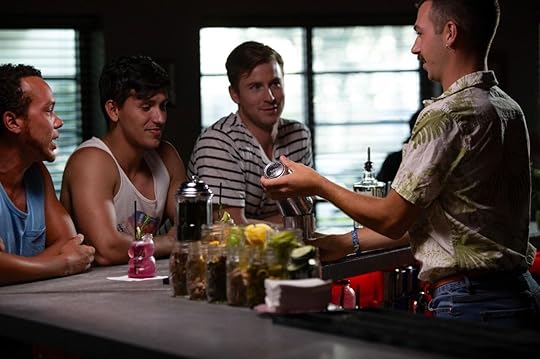
Photo: Miami and Beaches
This is Miami’s only gay watering hole where stumbling home might mean heading upstairs. Located in the lobby of the MiMo-style Hôtel Gaythering (complete with a clothing-optional men’s sauna), guests are only a skip away from spacious rooms ideal for catching z’s — though you’ll likely want to stay up until the bar’s last call.
Themed parties during the week attract a friendly mix of men: German drag import CC Glitzer sets the tone with Monday karaoke, Wednesday trivia and Thursday bingo promises potentially-free cocktails (try the Alvin Shakers: Gray Whale Giin, Lillet Blan, clementine, citrus, and a bitter apéritif), and Friday night’s “Bears and Hares” brings furry boys to the fore. The best thing about Bar Gaythering? Laidback, cozy, and unpretentious — it’s a welcome departure from the sceney club-thumping of other SoBe spots. The daily happy hour from 5:00 to 7:00 PM doesn’t hurt, either.
Address: 1409 Lincoln Rd F1, Miami Beach, FL 33139
Opening hours: Monday — Thursday 5:00 PM — 12:00 AM, Friday — Sunday 5:00 PM — 2:00 AM
There might not be any lesbian-centric bars in Miami, but at least there are Tuesday nights at Blackbird Ordinary, located 30 minutes from South Beach in skyscraper-sprinkled Brickell. Although it isn’t LGBTQ+-focused, ladies drink for free from 10:00 PM to 1:00 AM — which is precisely why the city’s Sapphic set decided it was worth queer colonization. And while we’re talking about queer, this bar fits the bill: somewhere between cocktail club and dance hall, Blackbird Ordinary breaks the binary. Sip avian-themed drinks while lounging in a leather banquette, or cut a rug on the dance floor until morning’s wee hours. Gals might have to deal with the unwanted male gaze, but at least there’s no worry about a boy buying you a drink.
Address: 729 SW 1st Ave, Miami, FL 33130
Opening hours: Daily 3:00 PM — 5:00 AM
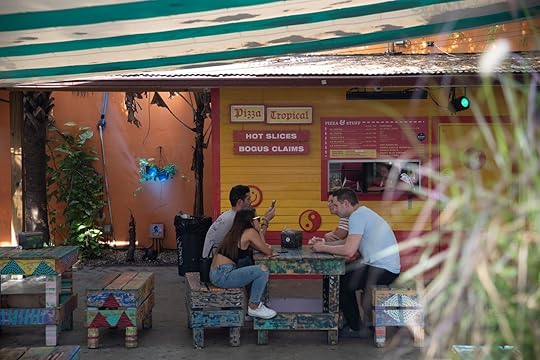
Photo: Miami and Beaches
Thursdays at Gramps are a drag — a good thing if you enjoy watching avant-garde art performed by Miami’s most wig-tastic bar stars. Bearded-and-brassy Karla Croquetta hosts the long-running party in Wynwood, which makes a strong case for staying out late on a school night. Don’t forget your dancing shoes — with DJs Mystic Bill, Hottpants, and Zehno spinning tunes, it’s hard to resist grooving between performances.
Gramps isn’t LGBTQ+-centered throughout the week, but it’s always queer-friendly. Stop in for pizza, craft beer, live music, pinball, Sunday’s pop-up vintage market, or the monthly erudite Nerd Nite — there’s always something fun going on, and the crowd is always cool.
Address: 176 NW 24th St, Miami, FL 33127
Opening hours: Monday — Thursday 4:00 PM — 1:00 AM, Friday 4:00 PM — 3:00 AM, Saturday 12:00 PM — 3:00 AM, Sunday 12:00 PM — 1:00 AM
An astronaut hangs from the ceiling, Bruce Lee karate chops over the bar, and stenciled lips on stools promise to kiss you where the sun doesn’t shine. The atmosphere at this queer-friendly dive is as quirky and eclectic as it looks, with themed nights throughout the week — including burlesque on the Lord’s Day (Sunday) and live music on Wednesdays. For definitive LGBTQ+ flavor, visit on Friday, when a ferocious coven of queens kick, split, and whirl around the slender slip of a bar. Those who prefer to take center stage should consider Thursday’s karaoke, hosted by bearded comic queen Auntie Maim. Is it really a night out in Miami if you’re not scream-belting local Latin heart-throb Enrique Iglesias’s “Hero” to a sea of strangers?
Address: 222 Española Way, Miami Beach, FL 33139
Opening hours: Daily 8:00 PM — 4:00 AM

Photo: Miami and Beaches
Husbands Rocco Carulli and Owen Bale, co-owners of R House, have myriad reasons to be proud of this restaurant. The building is covered in murals and outfitted in art; the Latin-inspired menu ranges from tasty Venezuelan arepas to Brazilian moquecas. Then there’s the crowd — uber-inclusive, ultra-trendy, and as colorful as Wynwood, the arty neighborhood it calls home.
But Carulli and Bale should be most proud of their political achievements: their venerated drag brunch is so titillating that in July 2022, it sent Florida’s anti-LGBTQ+ governor Ron DeSantis into a fire-breathing tizzy. (You know you’re doing something right when a prejudiced politician tries to shut you down.) The extravaganza, which takes place on Saturdays and Sundays, is a feast for the senses. Graze on dishes like cayenne fried chicken, chimichurri sliders, and French toast with guava syrup while downing bottomless mimosas and cheering on drag queens lip-syncing for their lunch money. Make reservations well in advance to ensure a seat.
Although the bar isn’t 100 percent LGBTQ+ all the time, it’s always worth a visit thanks to the classy-casual atmosphere and expertly mixed drinks (the Piña Loca — a piña colada served in a whole pineapple with sparklers, flamingo straws, tiki umbrellas, and five shots is a crowd pleaser).
Address: 2727 NW 2nd Ave, Miami, FL 33127
Opening hours: Monday — Tuesday closed, Wednesday — Thursday 4:00 PM — 10:00 PM, Friday 4:00 PM — 12:00 AM, Saturday 11:30 AM — 12:00 AM, 11:30 AM — 6:00 PM
This “hetero-friendly” hotel is an art déco beauty boasting multiple bars ideal for laid-back day drinks and early evening pre-games. Sun-kissed clientele sip pomegranate margaritas poolside until 8:00 PM, and as night descends, the crowd moves to Sky Bar for martinis and music until midnight. While Friday happy hours and Sunday pool parties often rival the banana-hammock parade on SoBe’s 12th Street gay beach, AxelBeach attracts a mixed crowd; it’s possible to find the alphabet-soup mafia’s full spectrum imbibing here in style. An attached restaurant — serving grilled sandwiches, salads, chicken wings, and more — makes this spot worth an all-day hang. 
Address: 1500 Collins Ave, Miami Beach, FL 33139
Opening hours: Daily 9:00 AM — 8:00 PM
Escape To a Luxury Waikiki Resort This Winter for 50% Off With This Exclusive Deal

We’ve got two pieces of news for you. First, today is the first day of fall. That means that cooler weather is on the way, and while this is a welcome reprieve for those of us who’ve lived through a scorching hot summer, it also means that the frigid winter chill isn’t too far off.
We hope you love the Embassy Suites – Waikiki Beach Walk! Just so you know, Matador may collect a small commission from the links on this page if you decide to book a stay. Listed prices are accurate as of the time of publication.
Second, there’s an easy way to escape that winter chill this year by escaping to a luxury resort in Hawaii with a partner, and it likely costs less than one month’s rent. This Travelzoo deal lands you four nights at the Embassy Suites – Waikiki Beach Walk for only $1,627 for two people — that’s 50 percent off. This deal is for a one-bedroom oceanview suite, one of the resort’s best rooms, complete with a living room and balcony to welcome the mornings and catch sunsets over the water.

Photo: Travelzoo

Photo: Travelzoo

Photo: Travelzoo

Photo: Travelzoo
The best part is that because this a Travelzoo deal, your purchase waives the $35 per night resort fee, so you get high-speed WiFi, beach towels, a nightly poolside cocktail reception, and more, all for free. This deal also includes free breakfast daily, and with the resort’s onsite dining and the nearby restaurants of Waikiki, you’ll have all the incredible meals you could ask for right near your room.
There’s no better way to escape the cold this winter than heading to Waikiki — and no better deal than this one to keep some bucks in your pocket without sacrificing the luxury experience that made the resort village famous. You know where to find us once the snow starts flying.
September 22, 2022
This Flight-Attendant-Approved Travel Essential Is Only $50

If there’s one job that requires you to spend ample time in the air and hotel rooms, it’s flight attendant. These helpful hands in the sky often have some of the best travel tips, like the best way to pack and what you should and shouldn’t drink on a flight. And then there’s what to pack. Flight attendant and TikTok influencer @flywithmerm recently revealed her must-have travel gadget that you probably didn’t even know you needed.
@flywithmerm Flight Attendant Must Haves#flightattendant #blackflightattendants #traveltiktok #travelmusthaves #foryou #cabincrew #traveltok ♬ 1 Thing Showmusik Remix – Showmusik Sounds
We hope you love the products we recommend! Just so you know, Matador may collect a small commission from the links on this page.
And the best part is that the travel kettle is under $50 on Amazon.
Let’s be honest — how often do you think the hotel coffee pot gets cleaned? On top of that, if you prefer coffee over tea, often using the hotel coffee pot will land you a cup of coffee-flavored tea. Yuck.
This collapsible mug won’t force you to take up valuable space in your carry-on. The kettle comes with:
Foldable Electric KettleCollapsible CupDetachable power cord (US Plug)Travel AdaptorZipper BagManualCustomer reviews also rave about the kettle:
“I purchased this after I saw a friend with one while traveling. The dual voltage allows use anywhere in the world. I’ve learned that having an electric tea pot is very useful. With the right products, you can do so much with boiled water! The problem with many is their bulk. The product easily collapses. It is sturdy enough to survive airline baggage handling. The collapsible cup and carry case make bringing it anywhere a snap. One caution. The pot will auto stop when it reaches a certain temp, however if you do not put the cover on in the closed position, all the water will bubble out. Also remember to shut off the pot because it will begin heating again after it cools down enough.” — Elle
“Perfect for travel! I was on a business trip. I was tired of making tea with the sad hotel room coffee makers with barely hot water that taste [d] like coffee. This worked perfectly! I will be bringing this on all my trips.” — Customer X
“Loved this little kettle. [It] Made it easy to keep water in my room even if it wasn’t for tea over my water bottle. I thought I read the instructions but somehow missed that if the boiling cycle is done, the kettle will keep your water hot. Since I don’t always remember these things, I would unplug it when empty just in case. Great traveling kettle & never need to worry again about when the last time that coffee pot was actually washed or what it may have been used for. I would recommend this product.” — Heather Switzer
So run, don’t walk to add this to your packing list. 
Matador Network's Blog
- Matador Network's profile
- 6 followers



